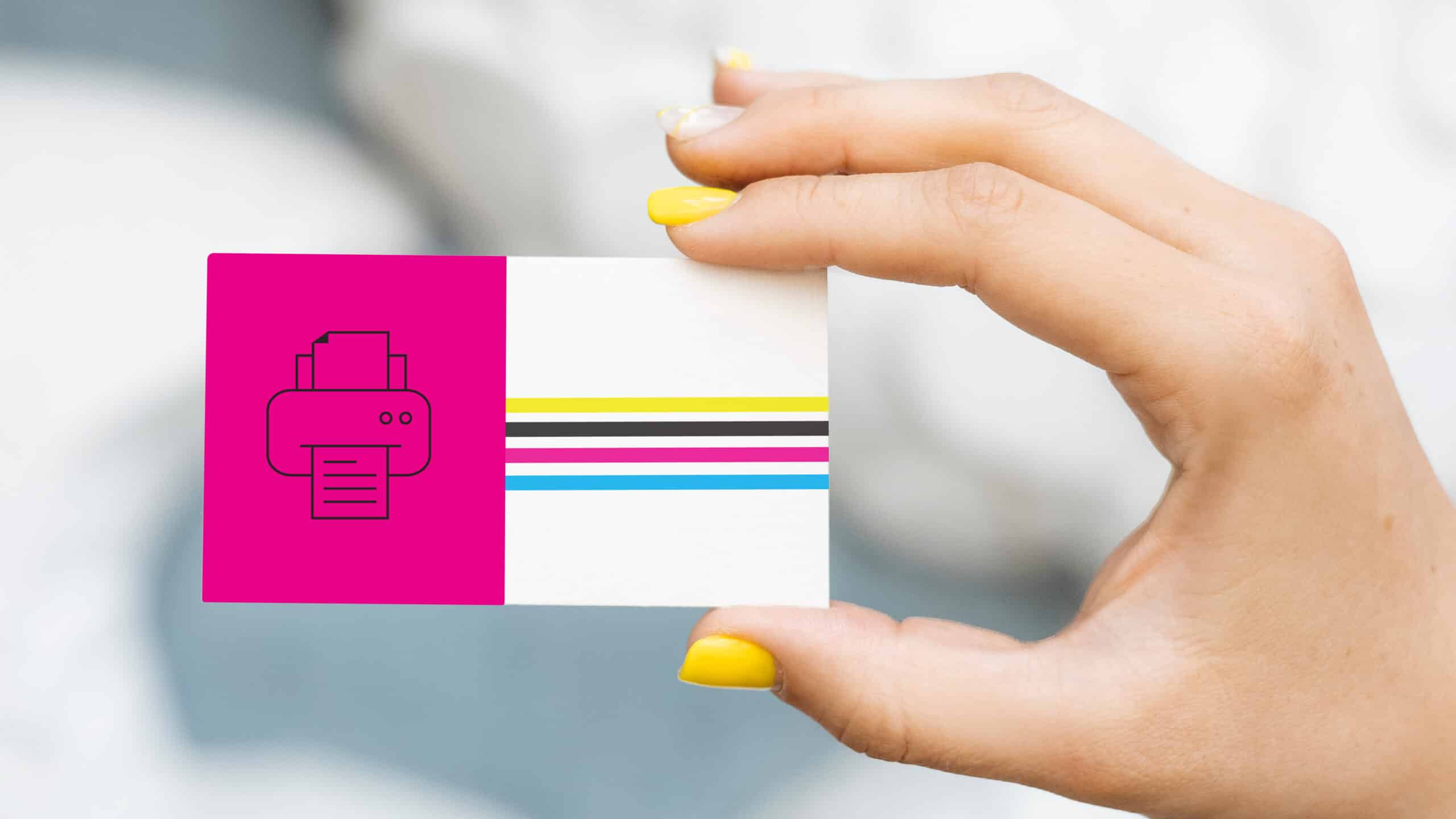
If there’s something we can learn from the film American Psycho, it’s the value of having a visually striking business card that makes a strong impression.
An effective business card achieves so much. It can assert your personal brand identity. It catches the eye with the right font, design elements and color. It advertises who you are and what you do.
What’s most important is the point of having a business card in the first place: It compels the recipient to want to contact you to do business together.
That value proposition alone is enough to justify why having a well-designed business card can make a lasting impression on potential clients and customers, and can help you stand out in a crowded market. But how do you go about designing a business card? Where do you start with that small little blank canvas? Here are a few tips to keep in mind:
Consider the Shape and Size of Your Business Card
The standard size for a business card is 3.5 x 2 inches, but you can choose a different size or shape if it suits your design. Rectangular is the traditional shape of most business cards, but you can opt for rounded edges or even die-cut shapes and designs, depending on the image you want your business to portray.
Make Your Branding Memorable
It would be a waste of money and paper to print thousands of business cards without a consistent brand image in mind, only to go back and spend money on a new batch of cards when you’ve nailed down your hook. Do you have an idea for a uniquely designed logo or slogan for your business? A catchy tagline? A compelling color scheme? Your business card should reflect your brand and the overall aesthetic of your business, so solidify all these details before printing a batch, even if they’re just sketches or ideas at this point.
Choose Your Text and Typography
Even the most slickly designed business cards wouldn’t actually be business cards without information about you, what you do and how to get in touch with you. Here are some common things to put on your card:
- Name: Unless your hook is the anonymous independent contractor, your name is the most important thing to list on your card.
- Company name: If your business name differs from your own.
- Phone number and email: If either (or both) are preferred methods of contact.
- Website and social media: To advertise your digital presence and additional contact info.
- Address: Listing your physical location is optional unless your business relies on a brick-and-mortar location.
Choose your typography and font carefully, and avoid using overly fancy ones. A clean, easy-to-read font will ensure that your business card is legible at all times.
Think About the Finish
Your business card’s finish is important for durability and perceived quality. Glossy or matte finish can be chosen to enhance the look and feel of the card. Consider other special touches, such as embossing, watermarks, letterpressing, foil stamping or even spot UV coating for added artistic touches, each bringing their own unique set of benefits to your card and what it reflects about you.
Don’t Make Your Business Card One-Sided
A business card rich in graphics, color, gloss and important content can seem awfully anti-climactic when you turn over the card to reveal … nothing. A lonely, blank reverse side can sometimes be a waste of paper when overlooked. But it can be a valuable space to include additional information such as a map, a list of services or products, or a special offer.
Consult a Business Card Designer
If you prefer a more streamlined, basic design, many printing companies can create the perfect card for you if you send them some relevant information and/or scans/screen grabs of your sketches or notes. But a professional designer can fully realize the vision you want to achieve for your card. You know you’ve got a keeper when you can communicate easily what you want to see on your business card, and they can turn it around into something striking and beautiful as though they read you very thoughts. Use their design as a template to print your batch.
As always, make sure that images and text are high-resolution and professional. This will ensure your business card looks sharp and polished.
Get Fantastic Results With Printastik
Printastik has you covered. For more than 35 years, we’ve offered a variety of printing solutions for our friends in the Twin Cities — and our business card printing is no exception. The standard stock we use for business cards is a coated 10pt Sterling Dull. This is a high-quality, grade 1 paper. But your options are limitless to create your own customized set of business cards.
All you have to do is contact us today to get started.